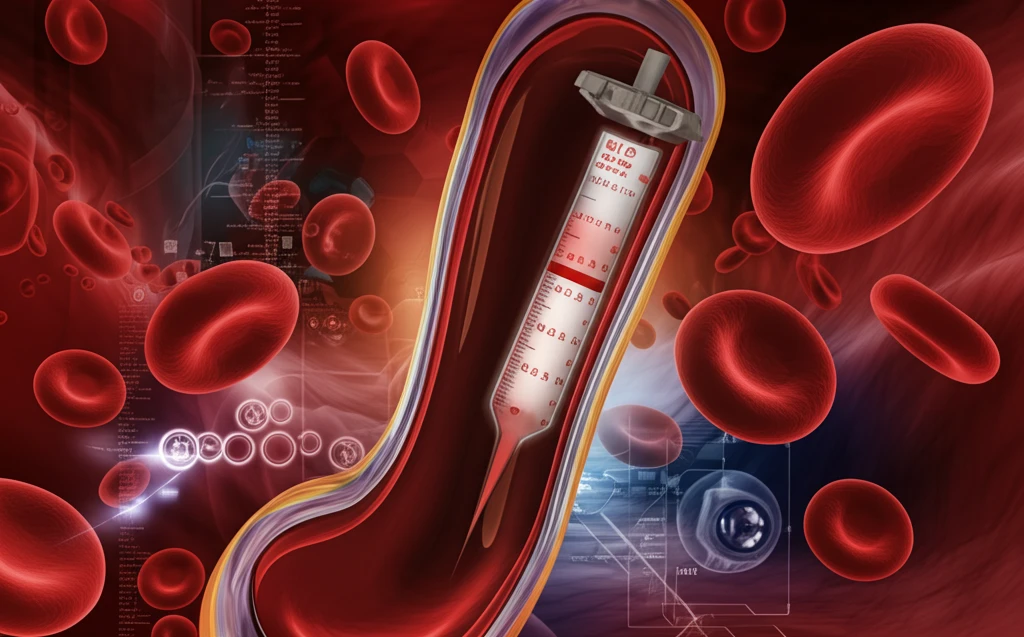
Unlock Your Blood's Secrets: The Variable Shear Stress Viscometer Explained
"Dive into the world of blood viscosity and discover how a specialized viscometer can reveal critical insights into your health."
Understanding blood viscosity, or how easily blood flows, is crucial for grasping various health conditions. Unlike simple fluids, blood's viscosity changes under different forces, a property known as non-Newtonian behavior. This is why specialized instruments called rotational viscometers are essential for accurate measurements. These devices ensure a constant shear rate across the fluid, providing a more precise analysis compared to linear or capillary viscometers.
The core principle behind viscosity measurement involves calculating the force applied to a material divided by the resulting deformation or flow. The force is the 'shear stress,' and the deformation is the 'shear rate.' In a rotational viscometer, shear stress is directly proportional to the angular velocity, or rotation, of the material. By knowing one term and measuring the other, viscosity can be accurately determined.
Traditionally, viscometers apply a known rotation and measure the resulting stress. However, this approach can mask the 'yield stress,' the force needed to overcome blood's inertia and initiate flow. A more insightful method involves applying a known stress and measuring the resulting rotation, allowing for direct determination of yield stress.
The Deer Rheometer: A Window into Blood's Viscoelastic Properties

The Deer Rheometer is designed to apply a 'known stress' and measure the resulting rotation, ensuring operation only when the set stress is met. It uses an electronically controlled induction motor and an air-supported bearing system to minimize friction. This setup reduces any interference, maintaining the precision of the measurement. This system allows for a direct determination of the yield stress, a critical factor in understanding blood flow dynamics.
- Mechanical Micrometer: Measuring the end gap between the cup and cylinder, or the cone and plate.
- Transducer Replacement: Enhancing accuracy to better than ±0.005mm.
- Thermistors: Monitoring temperature at shear faces.
- Air Pressure Controller: Giving constant pressure at air bearing.
The Clinical Significance of Low Shear Rate Analysis
In conclusion, the Deer Rheometer excels at analyzing blood at low to zero shear rates, which is particularly relevant for patients with hyperviscosity states who suffer from stasis in the microcirculation. Determining yield stress is critical, and although values can be derived by extrapolation, mathematical interpretations introduce uncertainty. Devices like the Haake CV100 and Contraves 100 struggle to approach these low-stress values, but the Contraves low shear 30 offers a potential comparison point. Addressing air bearing biasing system issues is key to making the Deer Rheometer a leading tool in biorheology.
